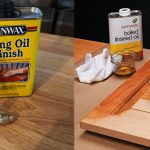How To Remove Tung Oil From Wood – (2 Easiest Methods!)
Are you planning to refurbish or remove excess tung oil on your wooden furniture? No need to worry; you don’t have to discard the piece of wood as you can easily remove the tung oil using simple and effective tricks.
So, how to remove tung oil from wood? You can employ 2 easiest techniques to remove tung oil finishes. You can use Turpentine or spirits like Naphtha or Xylene to soften the tung oil and scrub it off with a soft brush or steel wool. You may also opt to remove it using sandpaper.
This article will review the steps of removing the natural tung oil from wood using various techniques. In addition, we shall discuss safety precautions to consider when removing the preservative oil from wood.
How To Remove Tung Oil From Wood – (2 Easiest Methods!)
Removing the preservative oil from wood can be challenging, especially if you don’t have the right skills and equipment to follow. Tung preservative oil is a natural wood preservative extracted from tung tree bark. It’s applied to wood furniture to prevent water, dust, and molds from attacking the wood.
However, with time, the natural tung oil layer gets worn out, leaving patches of exposed wood in the environment. Such calls for refurbishing by removing the old layer and reapplying a new one.
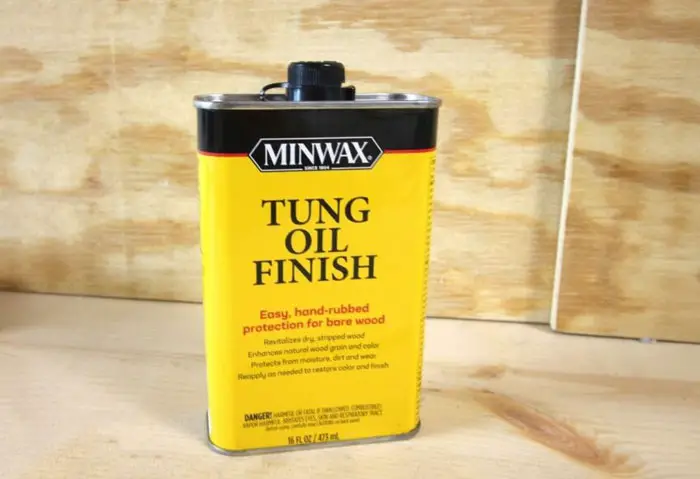
Below are two easiest methods of removing tung oil from wood.
- Removing tough tung oil from wood using Turpentine, Naphtha and Xylene.
- Removal by use of tung oil by sanding.
Let’s look at these two techniques of removing the preservative oil from wood using chemical and physical procedures.
How To Remove Tough Tung Oil From Wood Using Turpentine, Naphtha Or Xylene?
Tung oil can be removed from wood using chemicals such as Naphtha or Xylene that will dissolve the dried preservative and react with it to make it easy to scrub it off.
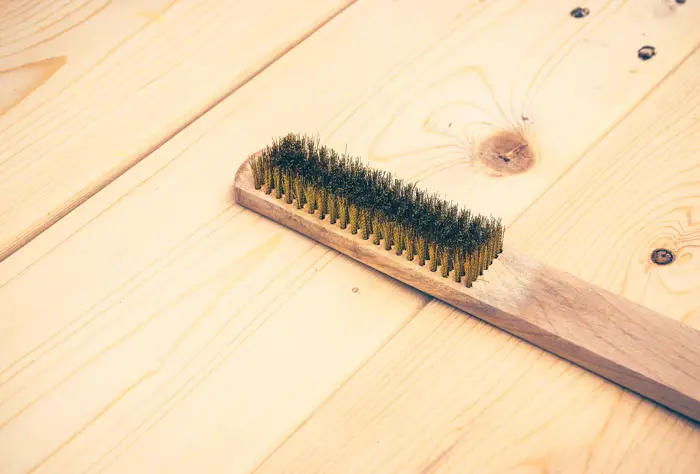
Tools And Equipment
Have the following tools and equipment for easy removal of tung oil using Turpentine or other chemicals.
- Turpentine
- A soft brush or steel wool
- Piece of cotton cloth
- Rubber gloves
- Mask
Follow the steps below for the removal of tung oil with Turpentine.
Step 1: Get A Well-Ventilated Space
This process involves using a Turpentine solution that, when inhaled, can harm your health. Therefore, get a well-ventilated working space or set up an outdoor working area.
Ensure there is sufficient airflow without much obstruction.
Step 2: Put On Protective Gear
For further protection while sanding, wear a mask to prevent inhalation of the Turpentine vapor as it evaporates.
You should also wear gloves to protect your hands from getting into contact with the Turpentine solution.
Step 3: Set Up The Pieces Of Tung Oiled Wood
It’s best to work on a firmly held piece of wood to avoid unnecessary moves. You can hold the wood in place using a G-clamp or make a simple DIY holding platform with pieces of wood.
Step 4: Prepare Turpentine Solution
Mix Turpentine and mineral spirits in a plastic container and stir it for proper mixing. Leave the container lid closed to prevent it from evaporating away.
Step 5: Soak A Piece Of Cotton Cloth In Turpentine
Dip a cotton cloth in the solution and allow it to soak. You can let it sit in the solution for about 10 seconds.
Step 6: Apply The Turpentine Solution Onto The Tung Oiled Wood
Lift the soaked cotton cloth and smear the Turpentine on the wood. Ensure all the wood surface area is wetted with Turpentine. Apply another layer of Turpentine after the first layer is absorbed.
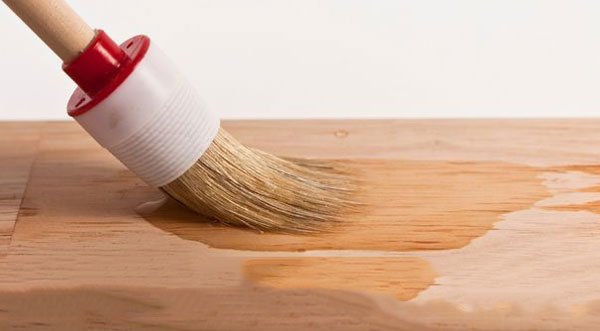
Step 7: Allow The Turpentine 5 Minutes To Be Absorbed
Let the wood sit for about 5 minutes as the Turpentine sinks deep into the tung oil. Once you observe form on the surface, the tung oil has been well dissolved and is ready for scrubbing off.
Step 8: Scrub Off The Tung Oil And Turpentine
Use a soft steel wool soaked in Turpentine to remove the tung oil from the wood. Test with a small area to ascertain whether it requires more time to dissolve. Wipe the debris in between to manage your working area.
Step 9: Wipe Any Excess Tung Oil
Soak a cotton cloth in Turpentine and wipe the patches for any remaining tung oil. Wipe off the patches repeatedly until all tung oil is removed.
You can now apply another coating of tung oil or any other preferred wood preservative.
How To Remove Tung Oil From Wood By Sanding?
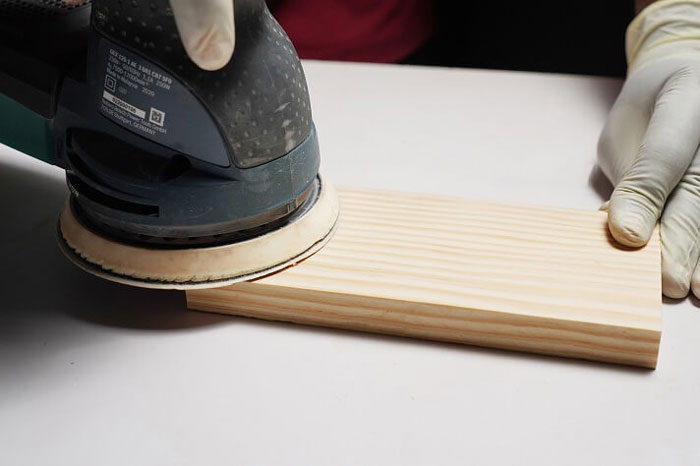
This method is among the most efficient physical methods of scrubbing off tung oil from your wooden surfaces. Have the following equipment ready to make your work easier.
Tools And Equipment
Have the following tools, materials, and equipment for making your work easier.
- Sandpaper – different grades
- A soft piece of cloth – cotton
- Turpentine
- Gloves and a mask
- A soft hand brush
Follow the steps below for efficient removal of tung oil by sanding.
Step 1: Get A Well-Ventilated Space
The sanding process involves the generation of wood dust that, when inhaled, can harm your health. Therefore, get a well-ventilated working space or set up an outdoor working area.
Ensure there is sufficient airflow without much obstruction.
Step 2: Put On Protective Gear
For further protection while sanding, wear a mask to prevent inhalation of the dust. When sanding wood, you should also wear gloves to protect your hands against blisters and injury.
Step 3: Set Up The Pieces Of Tung Oiled Wood To Sand
The sanding process is vigorous and requires a firmly held setup that won’t quickly move during the sanding process. You can hold the wood in place using a G-clamp or make a simple DIY holding platform with pieces of wood.
Step 4: Sand Off The Tung Oil On The Wood
Use coarse grit sandpaper to remove the thick layers of tung oil. Start by sanding a small area to unearth the depth of the layers to avoid scrubbing off the wood.
Sand the tung oil while wiping the dust with a dry cloth or a soft brush.
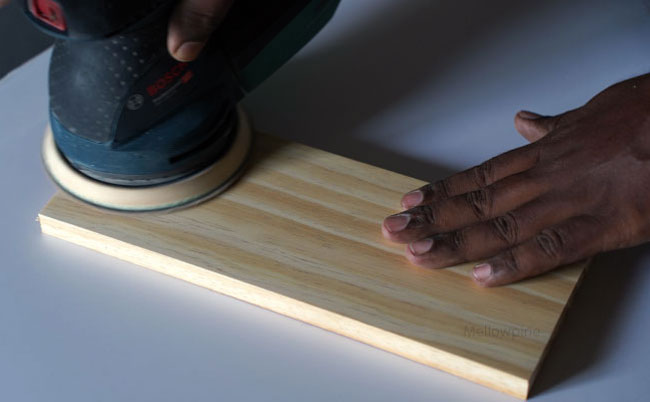
Step 5: Continue Sanding Using A Fine Grit Sandpaper
Once you remove the thick tung oil layer, remove the remaining thin layer using fine grit sandpaper.
The fine sandpaper lets you remove a thin layer of wood from which tung oil had penetrated.
Step 6: Wipe Dust From The Surface
Wipe the dust and dirt particles that remain on the wood using a soft brush or a piece of cotton cloth. Inspect to ascertain that all the tung oil has been successfully removed.
If there are some patches of tung oil, apply Turpentine, Naphtha, or Xylene to wipe off the remaining patches chemically.
Safety Precautions To Consider When Removing Tung Oil From Wood
Consider the following tips for your safety and the wood from which you wish to remove tung oil.
- Avoid grinding your fingers against the wood when handling tools such as sandpaper.
- Clean up any spills of Turpentine, Naphtha, and Xylene immediately after they get spilled to avoid polluting your working area.
- Tung oil and Turpentine are flammable; thus, you should not handle it near fire.
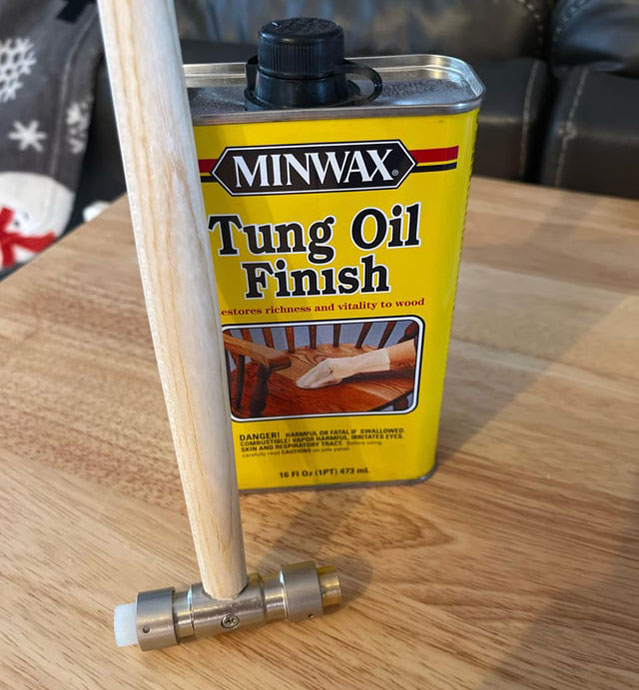
FAQs
Below are questions aimed at helping you when removing tung oil from wood.
Q: Which Is The Best Solvent Between Turpentine, Xylene, And Naphtha To Scrub Off Tung Oil From Wood?
Turpentine is the best solvent to use for the removal of tung oil from wood since it works in minutes compared to Xylene and Naphtha. It is also readily available as a paint thinner, hence easy to access.
Turpentine also has less harmful impacts on human health compared to Xylene and Naphtha.
Q: Is There A Standard Pattern For Sanding Off Tung Oil From Wood Using SandPaper?
Yes. Always sand the oil preservative from the wood along the grain. The grain direction is the longitudinal arrangement or pattern of the wood. You can observe the grain by checking on the wood fiber pattern.
Q: Can I Use A Smoothing Plane To Remove Tough Tung Oil From Wood?
You may use a smoothing plane to remove the preservative tung oil from the wood. However, using a smoothing plane isn’t advisable as it removes necessary parts of the wood while smoothing.
You can, however, use a smoothing plane to get a smooth finish after removing tung oil with sandpaper.
Conclusion
Tung oil helps preserve wood from external attack by mold or water and moist conditions that can cause wood to rot and decay. However, when the tung oil layer gets worn out or wrongly applied, you may be forced to remove it.
You can use Turpentine or any other paint thinner or sandpaper to remove the preservative tung oil from the wood.
The process requires care to avoid destroying the wood, especially during sanding. You must wear protective clothes to avoid inhaling dust and turpentine vapor that can harm human health.



